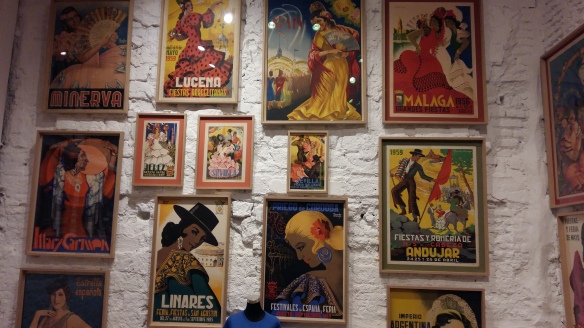
There’s nothing like watching an art form at its place of origin, where it packs every single ingredient without fail. Having watched Flamenco elsewhere and enough times on Youtube, really wanted to lap up all its flavor at its place of birth, Andalusia ! What better time to do it than the Biennial organized by the city of Seville. And Flamenco received UNESCO’s Intangible Cultural Heritage tag in 2010.
Though a month-long festival that spans many venues featuring top artists, there isn’t much fuss in town other than a few posters stuck here and there. But the halls get filled up as it draws a select audience from world over, in addition to locals. Speaking of world-audience, Japanese tops the list as this dance form has a huge following back there. At the halls, besides Spanish and English, announcements are made in Japanese too. Tickets sell out months in advance. It’s common to hear encouraging ‘Ole’ from enthusiastic aficionados from the sidelines at the shows. And a strict No,No for photography is a dampener.

revolutionary dancer Carmen Amaya
As with any other evolving art form, Flamenco comes in both, traditional and modern flavors. Gypsies or the Roma people are said to be the creators of this art during their misery days in the past centuries, combining what they inherited from their roots, said to be north-western parts of India, with other musical and dance traditions existed in their midst, like Andalucian folk, Moor, Berber, Arabic and Jewish. The music and dance also evolved as a way of venting their real-life struggles and sorrows in sensuous laments, giving the art form a strong and intense character. Though the Roma community is still a marginalized ethnic group throughout Europe, Flamenco has acquired a national symbol in Spain and helps a great deal in promoting tourism.
Besides the month-long festival, there are permanent, smaller and more intimate venues in town called Tablaos, where one can experience Flamenco anytime during the year. And for those interested in taking classes, workshops to sing, dance, clap and guitar-playing can be found around the town.


Finally to say a few words on the city of Seville itself, the Arabic, Jewish, Christian and Roma confluence of the past has given this city a fascinating amalgamation in its aura. The massive and ornamented Cathedral stands tall, as if to emphasize the domineering Christian faith of the state of Spain. The state owes much to Christopher Columbus, though his expeditions were sponsored by the ruling Catholic monarchs, it was he who paved the way for bringing the riches to Spain, by way of colonization of the Americas that involved darker period of slavery, genocide, looting, destruction and Christianisation of locally rich indigenous cultures. Rightly so, there is a tomb for the man himself at the Cathedral, where his remains said to have been buried after several moves.

the Cathedral
